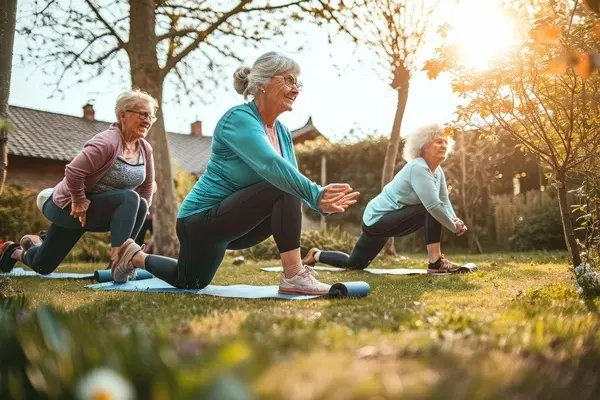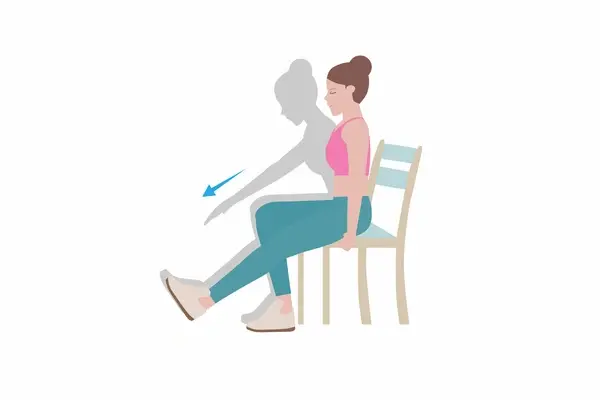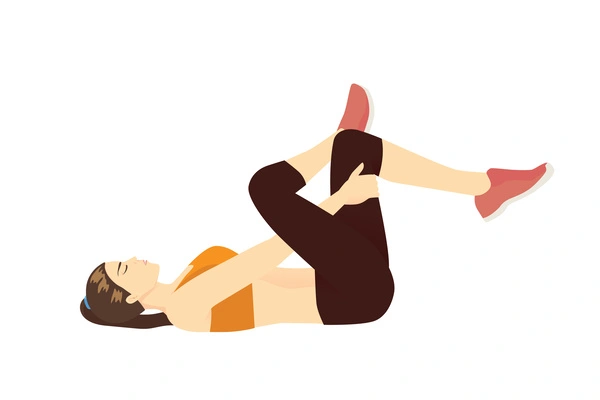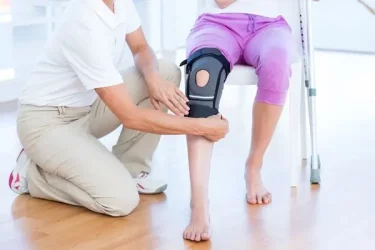“Look after your knees. You’ll miss them when they’re gone.”
Sound advice from an unlikely source – Baz Luhrmann’s late 90’s spoken word hit ‘Everybody’s Free to Wear Sunscreen’ – but it rings as true today as it did back then. Our knees carry us through life, so it’s crucial we take good care of them. In this article, we explore how to improve knee health, examining the best foods to eat and which exercises will keep you on your feet.

The importance of healthy knees
Good knee health isn’t just a case of preventing injury. It’s about the food you eat, the exercises you do, and the lifestyle you lead. Our knees are an essential part of our everyday mobility, so keeping them healthy and strong is of paramount importance.
Knee health and age
While it’s common for our knees to age, studies have shown it doesn’t necessarily have to happen at the same rate that we do. Maintaining a healthy weight reduces the pressure on your knees while moving, and can go a long way towards promoting good knee health.
Common knee health problems
The most common knee health problems stem from the following issues:
- knee injuries, including ligament ruptures or cartilage injuries
- kneecap instability
- being overweight or obese.
How to check your knee health
While there’s no specific way of checking your knee health, there are certain signs you can look out for that might indicate a problem. In middle aged and older people, persistent pain on the inside of the knee is a common symptom of osteoarthritis and could be a sign you need a knee replacement.
Bowing of the leg, knee stiffness, and swelling may also be an indication you should seek medical advice.
If you suspect you’re suffering from a knee issue, your GP or consultant can run tests. Most knee problems can be diagnosed by discussing the symptoms, a physical examination, and an X-ray. Sometimes, other investigations – such as an MRI – can be helpful.
Ways to improve knee health
There are many things you can do to help improve and promote knee health. These include:
- Weight loss – if you’re overweight, losing a few pounds will help to reduce the stress and pressure on your knee. Maintaining a healthy weight reduces the pressure on your knees while moving, and can go a long way towards promoting good knee health.
- Keep moving – exercise is usually safe for people with knee pain and can often be helpful. For a healthy lifestyle, it is recommended to do 150 minutes of moderate intensity exercise per week over the course of four or five days. Ideally, this should include a mix of aerobic exercise for fitness and resistance exercise for strong muscles. When you have knee pain, this can seem like a big target, so it’s important to do what you can and what your knee will tolerate. Try to build your exercise tolerance over time and do things your love like gardening
- Strengthen and stretch the surrounding muscles – when people get knee pain, they often – understandably – avoid exercise. Unfortunately, this can lead to weakness of muscles around the knee, often exacerbating the issue. It is important to avoid this by maintaining your muscle strength
- Low-impact exercise – swimming and cycling are great at not only promoting good knee health, but also your general fitness levels. An exercise bike can be helpful because you can choose a resistance setting that your knee can tolerate. Yoga, pilates, or tai chi are also great low-impact activities that help to improve strength and general flexibility
- Wear well-fitting, supportive footwear – if you’re exercising regularly, wearing the proper gear is a must. Poor-fitting footwear can put stress on your legs and increase the potential for injuries
- Don’t ignore knee pain – if you’re experiencing persistent knee pain, it could be your body’s way of telling you there’s something wrong. Having some time off can sometimes be as beneficial as the exercise itself. If the issue is still present after a period of rest, you should seek medical advice
- Warm up before sport – for people participating in sports with a higher risk of knee injury. These include football, netball, and basketball. A good warm up can reduce the risk of knee injury.
- Perfect your technique in sports – If you regularly participate in the same sport, it’s a good idea to refine good technique. Consider working with a qualified coach to reduce injury risk and improve performance.
- Vary your exercise routine – doing a variety of exercises will help work and strengthen different muscle groups, which in turn promotes good all-round health
- See a medical professional when you experience pain – a good physiotherapist is worth their weight in gold! Even if you’re a part-time gym-goer or exerciser, it’s a good idea to see a medical professional every now and again. He or she can loosen off any niggles, or diagnose and treat existing injuries.
Best food for knee health
There isn’t one specific type of food that will cure all your knee issues and make them strong again. However, some people believe that including the following food in your diet will certainly help:
- fatty fish high in Omega-3
- olive oil
- berries
- leafy greens
- ginger and garlic
- nuts and seeds.
Some people believe turmeric is helpful for knee pain. While there currently isn’t any strong evidence to support this, turmeric is safe when consumed as part of a balanced diet.
There is sparse evidence that suggests pro-inflammatory food may actually worsen symptoms of knee osteoarthritis. Pro-inflammatory foods include things like refined carbohydrates, animal fats, and red meat. Conversely, anti-inflammatory foods include things like fruit, vegetable oils, and seeds. Including these has long been recommended as part of a healthy diet.
Vitamins for knee health
A vitamin D deficiency can lead to weaker knees. It makes sense therefore, that eating foods high in vitamin D (such as egg yolk, fatty fish, and red meat) can help to avoid issues with your knees.
Knee joint health supplements
Some people like to try glucosamine and chondroitin as supplements. While there is no hard evidence that these help to promote healthy knees, they are unlikely to cause harm.
Collagen and knee health
Collagen is the most common protein in the human body. It plays a key role in making connective tissue and is a main component in the makeup of bone, skin, tendons, and ligaments.
Best exercises for knee health
Put simply: healthy legs promote healthy knees. If you focus on strengthening a range of different muscles in the legs, you will lower the risk of injury and help relieve stress on your knees. Exercises like hamstring curls are great for strengthening the hamstring muscle group, while keeping your quad muscles loose will encourage blood flow to the knee ligaments.
Knee strengthening exercises to try at home
While doing knee strengthening exercises at home is a great way to promote healthy knees, it’s a good idea to consult a physiotherapist. He or she can recommend specific exercises tailored to you.
The following exercises are easy to do at home and may be beneficial when helping to develop strong, healthy knees:
- hamstring curls
- squats (both single and with two legs)
- forward lunges
- thigh contractions.
Knee health stretches
Keeping leg muscles loose can go a long way in preventing injuries. The following are muscles to target when stretching:
- ITB (iliotibial band) – cross your left leg behind your right. Lean to your right and push your left hip outwards
- hamstring – sitting on the edge of a chair, straighten your left leg out in front of you while keeping your right leg bent. Bend from the hip towards your left knee until you feel a stretch in your hamstring

- quads – standing upright, bend your left leg at the knee and grab your left foot with your left hand. Gently pull your foot upwards until you feel a stretch in your left quad. Hold for 15 seconds and repeat with your right leg
- glutes – sitting on the floor with your legs outstretched, bend your left leg so your knee is pointing upwards. Cross this leg over your right leg and crook your right arm around your left knee. Hug it towards you until you feel a stretch in your left glute muscle. Hole for 10 seconds and repeat on the other side

- calves – loop a towel around the ball of your foot. Keeping your knee straight, pull your toes towards your nose until you feel the stretch. Hold for 10 seconds and repeat on the other leg.
Cycling and knee health
Getting on your bike is a great way of maintaining your fitness and enjoying some fresh air. It also represents low-impact exercise as it doesn’t put undue stress on your joints. Cycling after a knee replacement is a great way of getting back to fitness with a low risk of re-injury.
Knee health for runners
Whether you’re a fairweather runner or see yourself as the next Mo Farah, knees play a crucial role in running. Perhaps surprisingly, studies have shown regular running can actually decrease your chance of developing painful arthritis of the knee in later life.
Even for people with established osteoarthritis, running is generally safe. Running does not appear to cause faster progression of the condition. Although pain may increase during or after running, this does not necessarily mean that damage has been caused.
Sometimes, people without arthritis experience knee pain if they have substantially increased their running over a short period.
If you experience knee pain while running, it may be a sign that you should reduce the distance or frequency of your runs for a while. If your knee pain persists after increasing your mileage again, you should seek medical advice.
Yoga for knee health
You’ve likely heard about the general health benefits of yoga, so it won’t be news that regularly doing this activity is great for the knees. Specific yoga exercises such as … focus on strengthening the muscle groups around the knee joint, helping to lower the risk of injury and promote good knee health.
How to maintain knee health – FAQs
Not yet found what you’re looking for? Our dedicated knee health FAQs might be able to help!
Plenty of exercises and a healthy diet. The exercises should include squats, forward lunges, hamstring curls, and thigh contractions. A physio can recommend more exercises tailored to your specific issue.
Following knee surgery, it’s crucial to rebuild your knee strength. This is to help ensure a full recovery. It can also lower your risk of re-injury and generally encourage good knee health.
It might sound contrary to what we think we know about knee cartilage but running can actually help keep them healthy. Pressure from weight-bearing activities like running compresses the cartilage. This squeezes out the waste while taking in nutrients from the fluids around the knee.
Also called crepitus, there is no evidence to suggest using the RICE recovery method (Rest, Ice, Compression, Elevation) can help. Some methods you can try are over-the-counter pain medication like anti-inflammatories, and consulting a physio.
A healthy diet, regular exercise, and regular stretching. Cycling and swimming are both good exercises to do as they’re low-impact.
There isn’t really a way to strengthen your knee ligaments. You can strengthen the muscles around the knee. This can help to relieve some of the stresses and pressure on the knee ligaments. Regular leg strengthening exercises include:
– squats
– forward lunges
– leg lifts
– heel slides.






